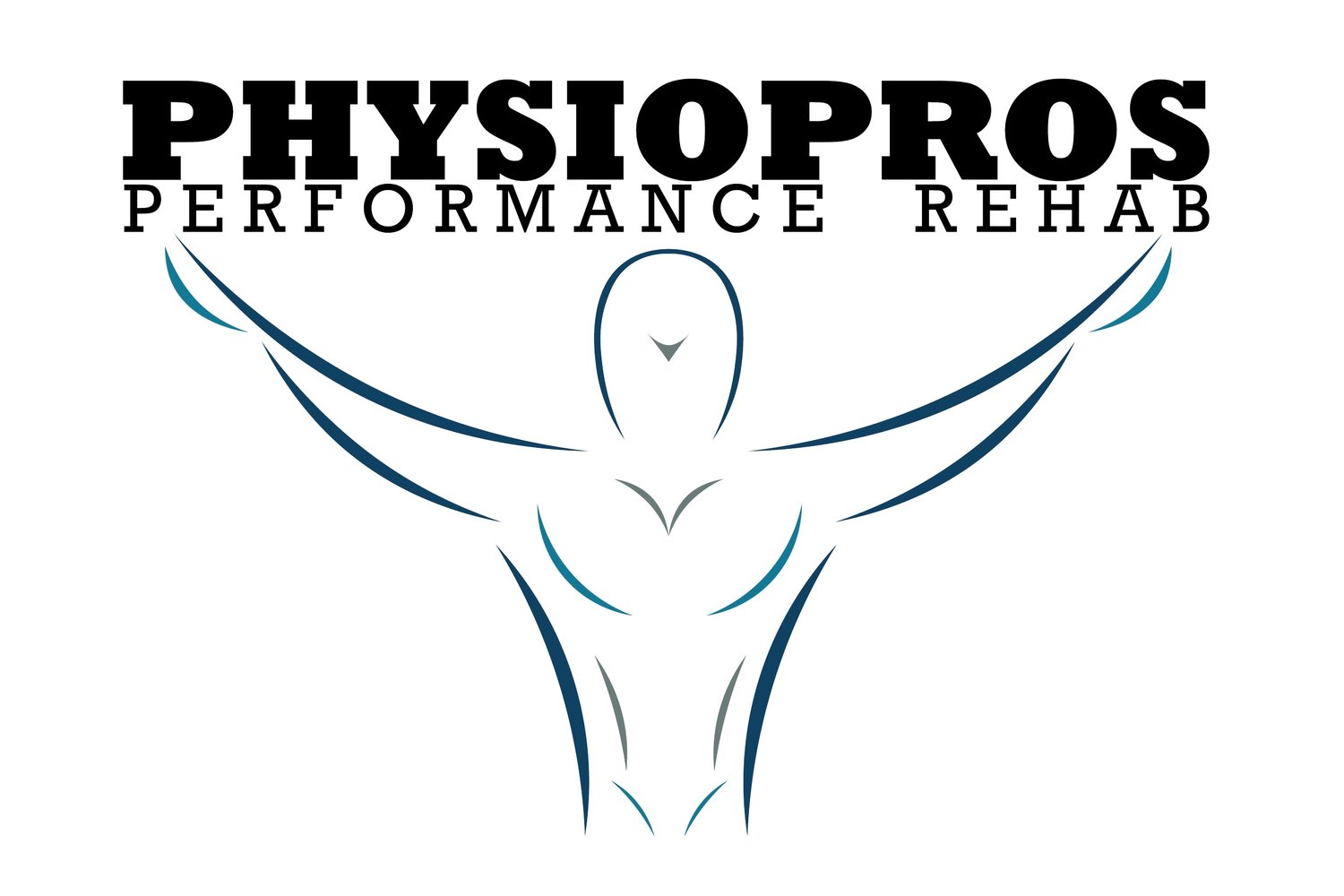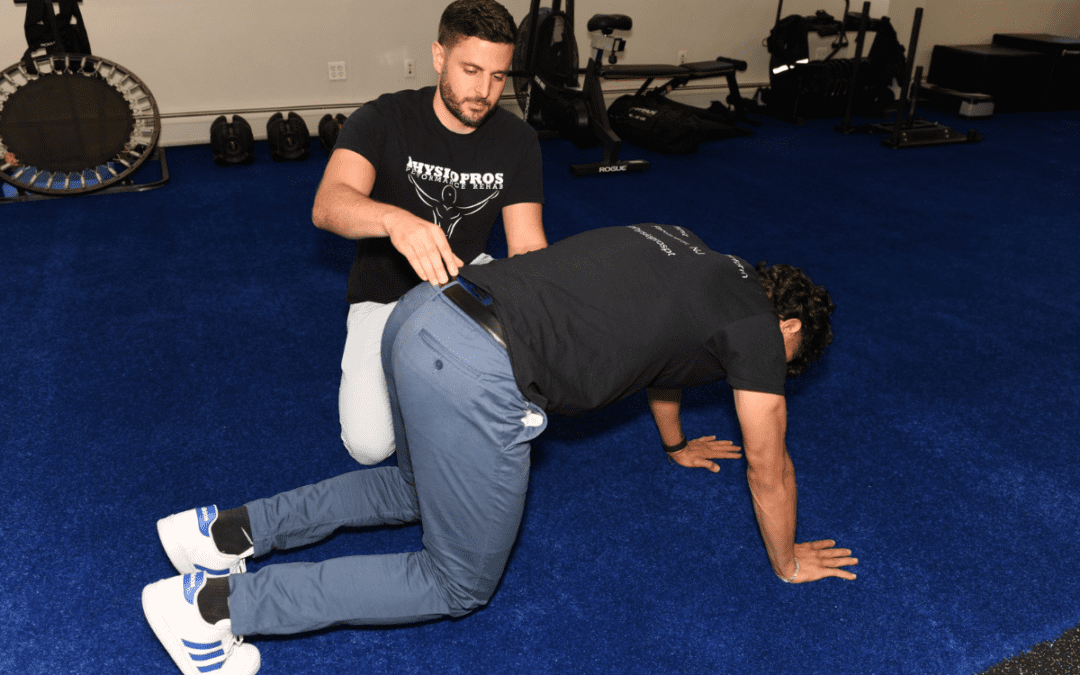5 Active Physical Therapy Exercises You Can Do at Home
Staying active is key to a successful recovery, whether you’re healing from an injury or managing a chronic condition. At Physiopros Performance Rehab, we believe that keeping up with your physical therapy routine, even at home, can make a big difference in how you feel and move. That’s where active physical therapy comes in.
In this post, we’re going to share five simple and effective active physical therapy exercises you can do right in the comfort of your own home. These exercises are designed to help you stay strong, flexible, and on track with your recovery, no matter where you are.
What is Active Physical Therapy?
Active physical therapy is a hands-on approach to your recovery that puts you in control. Unlike passive physical therapy, where the therapist does most of the work for you, active physical therapy involves exercises and movements that you perform yourself. These exercises are designed to help you build strength, improve flexibility, and increase mobility.
At Physiopros Performance Rehab, we focus on active physical therapy because it empowers you to take charge of your own healing process. By actively engaging in your therapy, you’re not just passively letting your body heal, you’re actively working to make it stronger and more resilient.
Why Doing These Exercises at Home is Important
Doing your physical therapy exercises at home isn’t just about convenience, it’s a crucial part of your recovery. When you stay consistent with your exercises, you reinforce the progress you make during your sessions at Physiopros Performance Rehab. This consistency helps you maintain strength, flexibility, and mobility between appointments, making your overall recovery quicker and more effective.
Plus, doing these exercises at home empowers you to take control of your healing process. It’s a way to stay active, even on days when you’re not at the clinic. By incorporating active physical therapy into your daily routine, you’re setting yourself up for long-term success and better overall health.
5 Active Physical Therapy Exercises You Can Do at Home
Here are five active physical therapy exercises that are easy to do at home and can help you stay on track with your recovery:
1. Glute Bridges
- How to Do It: Lie on your back with your knees bent and feet flat on the floor. Place your arms at your sides. Lift your hips off the ground, squeezing your glutes at the top, then slowly lower back down.
- Benefits: This exercise strengthens your lower back, glutes, and hamstrings, which are essential for good posture and stability.
2. Clamshells
- How to Do It: Lie on your side with your knees bent at a 90-degree angle. Keep your feet together and slowly lift your top knee towards the ceiling, keeping your hips steady. Lower your knee back down slowly.
- Benefits: Clamshells target your hip muscles and glutes, helping to improve balance and reduce knee pain.
3. Wall Squats
- How to Do It: Stand with your back against a wall and your feet shoulder-width apart. Slowly slide down the wall into a squat position, making sure your knees don’t go past your toes. Hold for a few seconds, then push back up.
- Benefits: Wall squats strengthen your quads, hamstrings, and glutes, which are crucial for knee stability and overall leg strength.
4. Beast Pose
- How to Do It: Start on all fours, with your hands directly under your shoulders and your knees under your hips. Lift your knees a few inches off the ground, keeping your back flat and your core engaged. Hold this position for several seconds before lowering your knees back down.
- Benefits: Beast pose is great for building core strength, shoulder stability, and overall body control, which are important for everyday movements.
5. Bird-Dog
- How to Do It: Start on your hands and knees. Extend one arm forward and the opposite leg backward, keeping your back straight. Hold for a few seconds, then switch sides.
- Benefits: Bird-Dog exercises help with core stability, balance, and coordination, which are key for everyday movements.
These exercises are simple yet effective ways to continue your active physical therapy at home, helping you build strength and stay flexible as you recover with us here at Physiopros Performance Rehab located in Parsippany, NJ.
Tips for Doing The Exercises Safely
To get the most out of your home exercises, it’s important to practice them safely. Here are some tips to help you stay on track:
1. Start Slow
- Tip: Begin with a few repetitions of each exercise and gradually increase the number as you become more comfortable. There’s no need to rush, focus on doing each movement with proper form.
2. Listen to Your Body
- Tip: If an exercise causes sharp pain or discomfort, stop immediately. Some muscle soreness is normal, but pain could be a sign that something isn’t right. If you’re unsure, reach out to your physical therapist for guidance.
3. Stay Consistent
- Tip: Consistency is key to making progress. Try to incorporate these exercises into your routine 2-3 times a week, or as recommended by your therapist. The more regular you are with your exercises, the better your results will be.
4. Focus on Form
- Tip: Good form is essential to prevent injury and ensure you’re targeting the right muscles. Use a mirror to check your posture or ask someone to watch you. If needed, slow down to make sure you’re doing each exercise correctly.
5. Modify if Necessary
- Tip: Everyone’s body is different, so don’t be afraid to modify an exercise to suit your needs. If an exercise is too difficult, start with a simpler version or reduce the range of motion. Your physical therapist can provide specific modifications based on your condition.
Remember, Physiopros Performance Rehab is always here to support you. If you have any questions or need personalized advice, don’t hesitate to reach out to us. We’re committed to helping you succeed in your recovery journey, both in the clinic and at home.
FAQ
Here are some common questions about doing active physical therapy exercises at home, along with their answers:
Q1: How often should I do these exercises?
- For best results, aim to do these exercises 2-3 times a week. Consistency is important, so try to fit them into your regular routine. If your physical therapist has given you a different schedule, be sure to follow their advice.
Q2: Can I do these exercises if I’m experiencing pain?
- Mild discomfort can be normal, but sharp or intense pain is a sign that something might be wrong. If you experience pain during an exercise, stop immediately. It’s important to consult your physical therapist to ensure you’re not doing more harm than good.
Q3: Do I need any special equipment for these exercises?
- No special equipment is required for these exercises. All you need is comfortable clothing and a flat surface. Some exercises, like wall squats or glute bridges, can be done with just your body weight, while others may benefit from a yoga mat for added comfort. If you have weights at home you can incorporate them to these exercises as well.
Q4: How long will it take to see results from these exercises?
- The time it takes to see results can vary depending on your starting point and consistency. Generally, with regular practice, you may start to notice improvements in strength and flexibility within a few weeks. Stick with it and be patient as your body adjusts and improves.
Q5: What should I do if I’m unsure about my form?
- If you’re unsure about your form, try using a mirror to check your alignment or record yourself performing the exercises. You can also reach out to your physical therapist for guidance or tips on proper technique to ensure you’re doing the exercises correctly and safely.
If you have any other questions or need further assistance, remember that Physiopros Performance Rehab is always here to help. Contact us at 973-265-8621 or fill out our contact form online to schedule your next physical therapy appointment today. We’re dedicated to supporting you on your journey to recovery. Finally, make sure to check out our Instagram: PhysioprosPT for all the latest news and information regarding physical therapy from your go-to clinic, Physiopros Performance Rehab.

